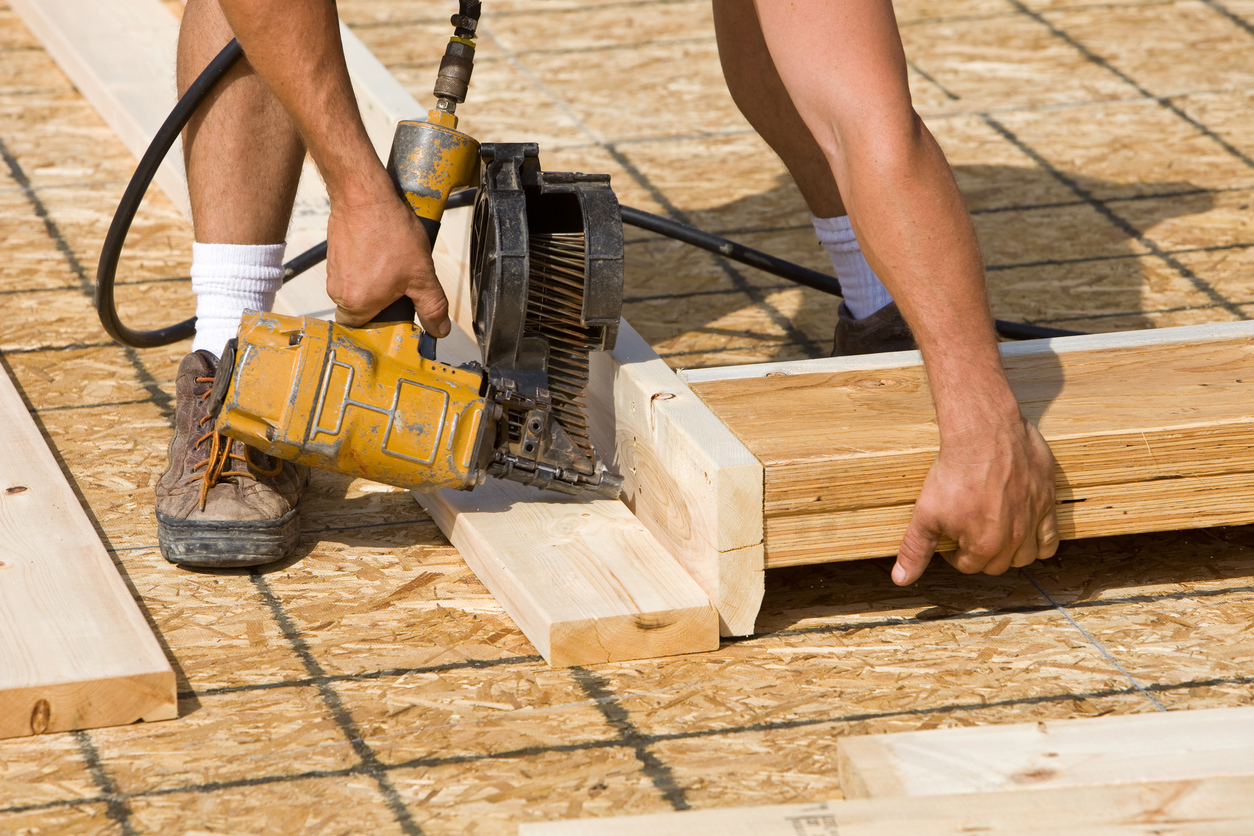
According to OSHA, nail guns are responsible for 37,000 trips to the emergency room each year. Injuries on the jobsite can delay construction and incur fines when proper safety procedures are not being followed. A recent study found 2 out of 5 residential carpenter apprentices had a nail-gun injury in their first four years on the job. Here are the six most important safety tips to follow to avoid nail-gun injuries.
Use the Full Sequential Trigger
While this may slow you down a little, it does reduce the risk of unintentional discharges, double fires and injuring bystanders. It’s especially important to use full sequential triggers in situations where the lumber is being held in place with one hand while the nail gun in in the other. Consider full sequential triggers for new crew members who are inexperienced. If you are using more than one kind of trigger on the same job, color-code the nail guns for easy identification.
Studies by OSHA show that speed is dependant more on the skill of the user than on trigger type, so prevent the bigger delays that injuries bring by sticking to safer triggers. OSHA also found that: “…nail gun injury is twice as high when using contact trigger nail guns compared to using sequential trigger nail guns.”
About 1 in every 10 injuries happens to bystanders who bump into coworkers who have a contact gun with the trigger pressed. They also get injured from airborne nails which accidentally fire when framers are carrying a contact nail gun with the trigger depressed.
Provide Proper Training
Have your crew been instructed on the safe use of nail guns? All workers can benefit from regular safety training and updates. When buying newer models, consult the manufacturer’s instruction to ensure that you are up to date with safety procedures. Here is a list of training topics from OSHA that all your workers should know:
- How nail guns work and how triggers differ.
- Main causes of injuries – especially differences among types of triggers.
- Instructions provided in manufacturer tool manuals and where the manual is kept.
- What to do when a nail gun malfunctions.
Establish Nail Gun Procedures
Create a set of rules for using nail guns and stipulate which workers can use which triggers. These rules should include regular training for existing workers and new recruits. Each worker must read and understand the manufacturer’s instructions. Tools must be checked before operating and any broken or damaged tools should be fixed or replaced. Malfunctioning nail guns must be taken out of circulation immediately.
- Gun safety measures should never be removed or bypassed. This can be removing the spring from the safety-contact tip or securing the trigger so it does not need to be pressed.
- The trigger should never be pressed when holding or carrying a gun or changing position.
- Don’t lower or drag the gun by the hose.
- Only use a nail gun with your dominant hand.
- Set up work stations so there are no coworkers near workers operating nail guns.
- Check lumber surfaces prior to nailing for knots, nails, straps, and hangers that could cause recoil.
- During placement work, hands should be at least 12 inches away from the nail gun at all times.
- Always disconnect the compressed air when you are leaving the nail gun unattended, when you are moving up or down stairs and scaffolding, passing the nail gun to a coworker, and removing jammed nails.
Always Wear Safety Gear
Safety boots can prevent nail gun injuries to feet. Employers must provide hard hats, high-impact eye protection, and hearing protection. While safety boots are the employee’s prerogative, safety gear should be supplied by the employer at no cost to workers.
Report Injuries
Studies show that most injuries are not reported to OSHA. Encourage workers to report injuries so that risks can be assessed and future injuries prevented. Reporting injuries also means that workers get the medical attention they need. Ensure that your safety incentive programs are not encouraging workers to leave injuries unreported.
In the event of a nail-gun injury, provide immediate medical care, even of the wound appears to be superficial. Adhesives, strip glue, plastic and fabric can all get embedded in the wound which could lead to infection. Barbs on some fasteners can cause additional injury when removed and the force of nail guns will often result in fractures. Seeking immediate medical attention will mean that these injuries are properly cared for and that your worker returns to the jobsite sooner.
